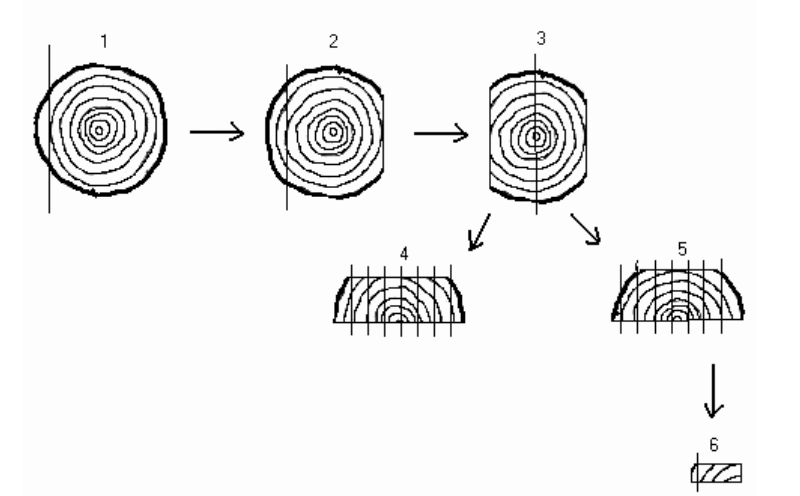From waste to material:
Primary Processing
Our visit to the Serraria Ecológica de Guarulhos, SP. Learn more about Serraria here
The first stage of wood processing is called primary processing, or splitting, a process in which the trunks and branches are transformed into sawn pieces with more or less standardized characteristics. Urban pruning wood is usually cut in short lengths, and can also be sawn into commercial sections (laths, rafters, beams and boards), and the cut can be tangential or radial (see figures 1 and 2) As it has different dimensions and generally smaller sections, the primary processing of pruning woods, can often result in less standardized parts. The lack of dimensional homogeneity and the diversity of wood species from urban pruning is enormous, especially in Brazil. So that each region and each type of wood requires a different splitting process. Studies indicate that up to 30% of green waste could be applied to high value-added artifacts (NZOKOU, 2019), but for this, a very well organized management of the flows of generation, processing and destination of these wastes is necessary.

In the yard for the storage of raw wood, it is essential to install a system for classifying the pieces, mainly by diameter classes, species and also by the quality of the round wood. It is also recommended that the logs be stripped and a product applied to seal the tops and thus reduce the drying speed of the green wood, avoiding excessive cracks and defects. In the process of obtaining sawn wood, the greater the automation level of an industry, the greater its efficiency, that is, the greater the amount of m3 sawn per worker in a shift (Rocha and Trugilho, 2006). Figure 1 presents an illustrative scheme of the splitting method aiming at obtaining tangential boards, with equipment indication, in which 1 and 2 band saw; 3 multiple single-axis circular saw; 4 circular trimming saw.
Figure 2 shows an illustration of the splitting method used to obtain radial boards. In this case, the sequence of equipment used is: 1, 2 and 3 band saws; 4 and 5 multiple single-axis circular saws; 6 circular saws with trimmers.

